Uncovering secrets of the Plant Frenzy
Timeline: June 2021 - Nov 2021 | Platform: Print + Explorative / Provocative Artefact Project
An individual design project exploring the bizarre obsession of collecting plants during the pandemic and revealing the reality of hoarding.
Introduction
In recent years, social media has become inundated with pictures of house plants and their owners, often tagged with the hashtag #plantsofinstagram. This trend has led to the rise of a new breed of social media influencers known as "Plant-fluencers." These individuals have garnered thousands of followers by posting pictures and videos of their house plants and offering tips and advice on how to care for them.
This made me question why people adorn plants in their homes and whether is it even sustainable.
Problem
With secondary research, many articles show plants mainly as a decoration but recently, they have become more than that. House plants became a status symbol, and rare plants even became valuable prizes in social media contests.
There are not many articles and research going into this precedent locally.
Goal
Uncovering the Plant Frenzy is a design project that seeks to explore the ridiculousness of the extent of how many these Plant Parents own and how that affects and influences the rest of the market.
It will attempt to provide a holistic system design solution through phases split into a provocation artefact design and a publication.
Impact
In the context of Singapore, the impact of international social media posts on the "Plant-fluencer" phenomenon has been significant. Many local Singaporeans have been influenced by the trends and styles of international "Plant-fluencers," leading to a surge in interest and participation in this trend.
However, this interest has also had an impact on the local environment and economy. The increased demand for rare and exotic plants has led to a rise in prices, with some rare species fetching thousands of dollars in local markets. This has led to concerns about the sustainability of the trend, and the impact it may have on local ecosystems and the environment.
An explorative project that focuses on the local impact of the "Plant-fluencer" trend could help to address some of these concerns, by raising awareness of the issues and promoting more sustainable practices among local plant enthusiasts. This could include highlighting the work of local growers and nurseries, as well as promoting the use of locally sourced and sustainable plant varieties.
Early Ideation
Take a peek at my Creative Process Journal by using this link!



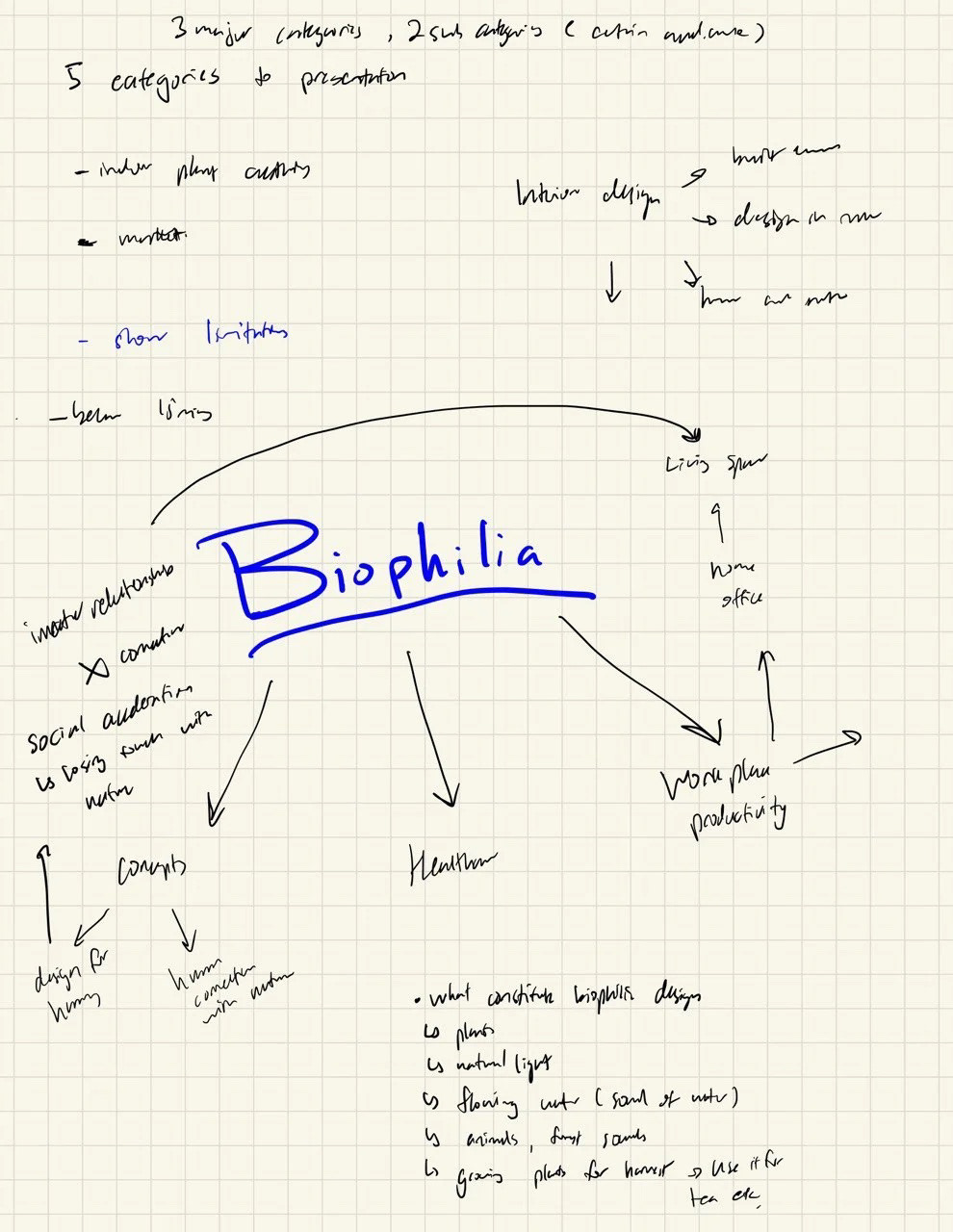

Final designs
Artefact 1: Potted Paper Plants Presenting Plant-fluencers
An artefact that encapsulates the 4 components — Demographic, Geographic, Behavioural and Psychographic of your target audience. Consider the approach thoroughly.
A collection of 3 potted plants featuring international “Plant-fluencers”, the “Plant-fluenced” and reasons why locals buy plants (statistics from primary research.) Encouraging physical user engagement and interactivity to find out more about the information shown on the artefact
After brainstorming and consultations, I have landed on creating paper plants and inducing data that can help explain the characteristics of my target audience. This gives the sense of “home-ly” vibes to the user, which is what the indoor gardening community is all about.
I wanted to show how social media is influencing the millennials in Singapore to start collecting more and more plants, so I made 2 pots to showcase this relationship.
The first is the houseplant influencers or also known as “The Plant-fluencers”. The leaves display the individual collector how popular and wide-reaching his motives are to influence people to buy, whether it is flaunting their collection or advertising their plant-selling business.
The second potted plant is about the local millennials that are being influenced by this trend and what factors will affect the consumption habits of houseplants.
The last potted plant will be displaying the data that has been collected by one of my primary research methods in the form of a questionnaire. I will be displaying the reasons why my recipients (local plant owners) would want to own plants. This can show local and current insights that can portray their consumption habits.


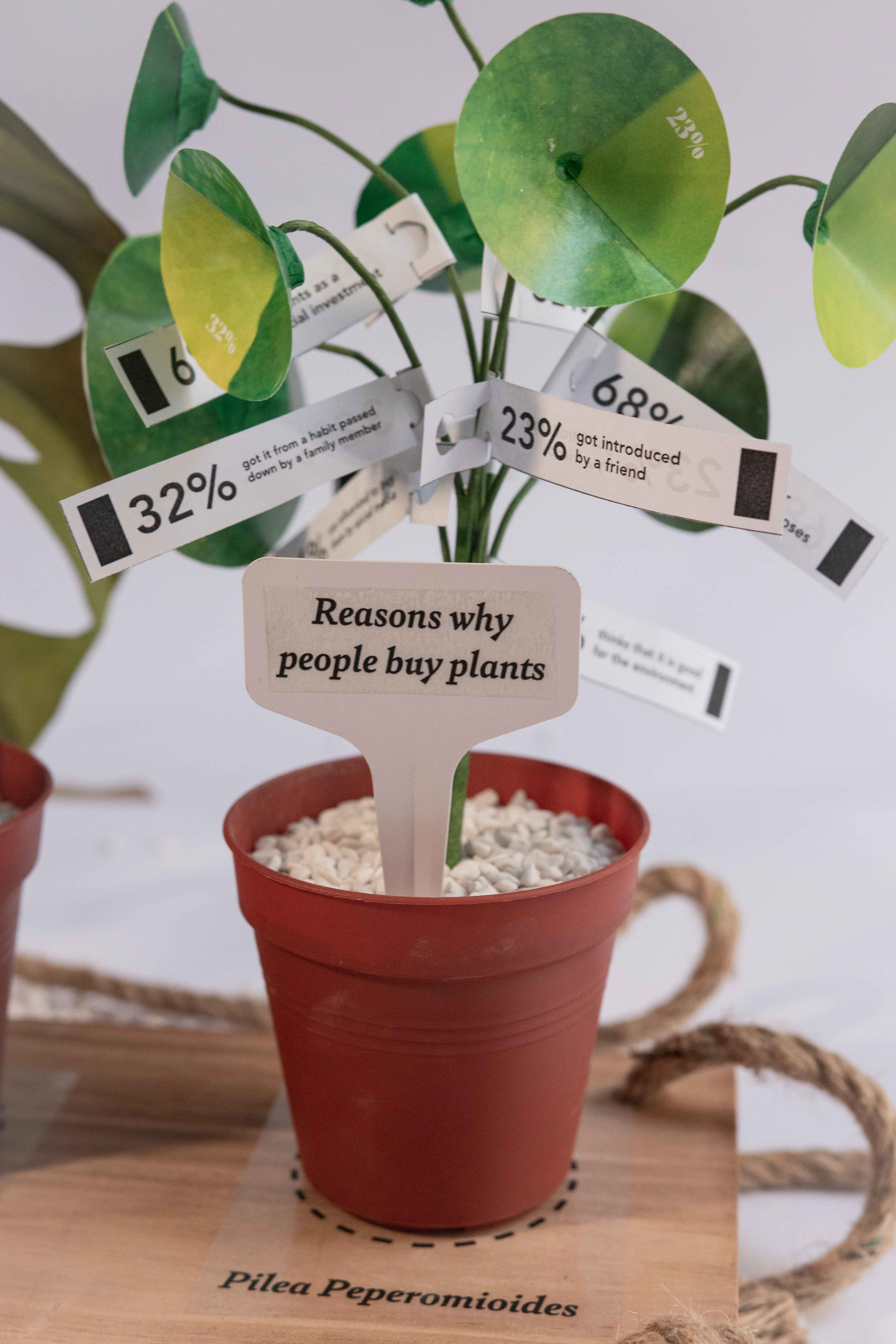
Artefact 2: Publication
A publication featuring the perspectives of a local nursery owner and a plant collector on this unprecedented demand for houseplants in Singapore’s context.
To provoke the reader, the publication showcases the evidence of overconsumption and its effects of it in a more personal setting. Hence, I interviewed two local plant collectors in Singapore.
One is a hobbyist turned owner of a nursery and the other is just a serious plant collector and consumer. Having both the perspective of the seller and buyer will allow the reader to understand the predicament as a whole and it uncovers portions of the movement that people might not consider before.


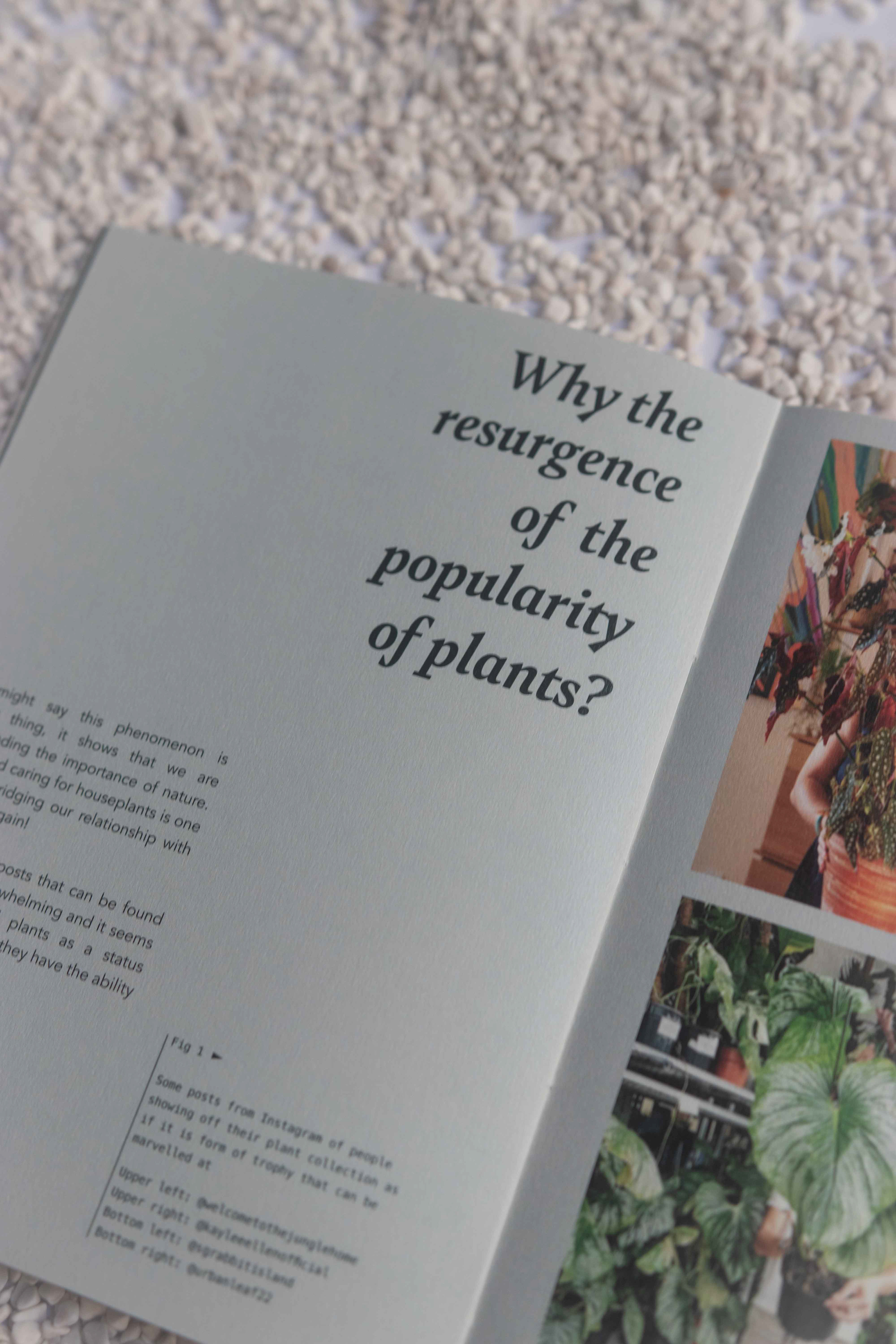

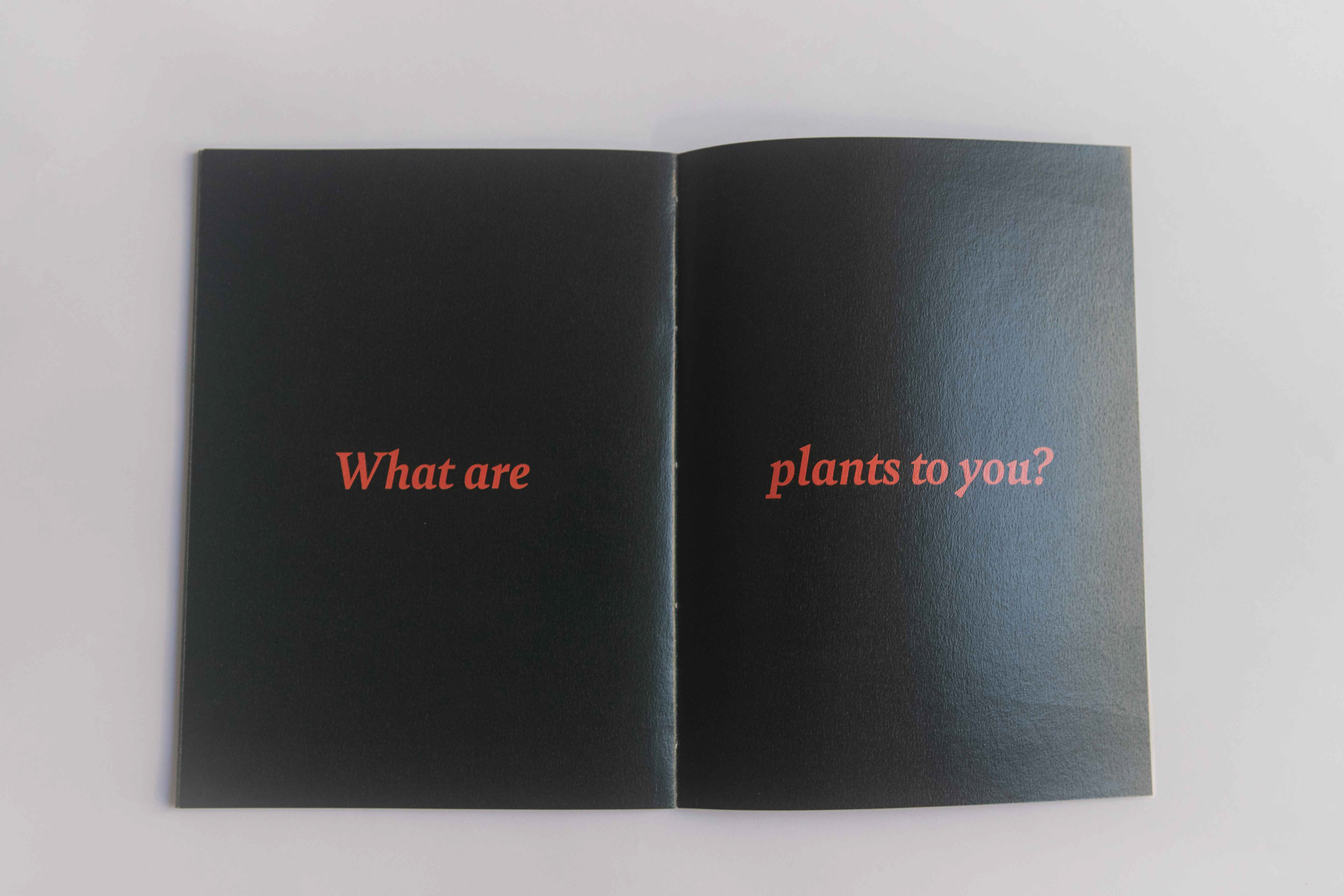
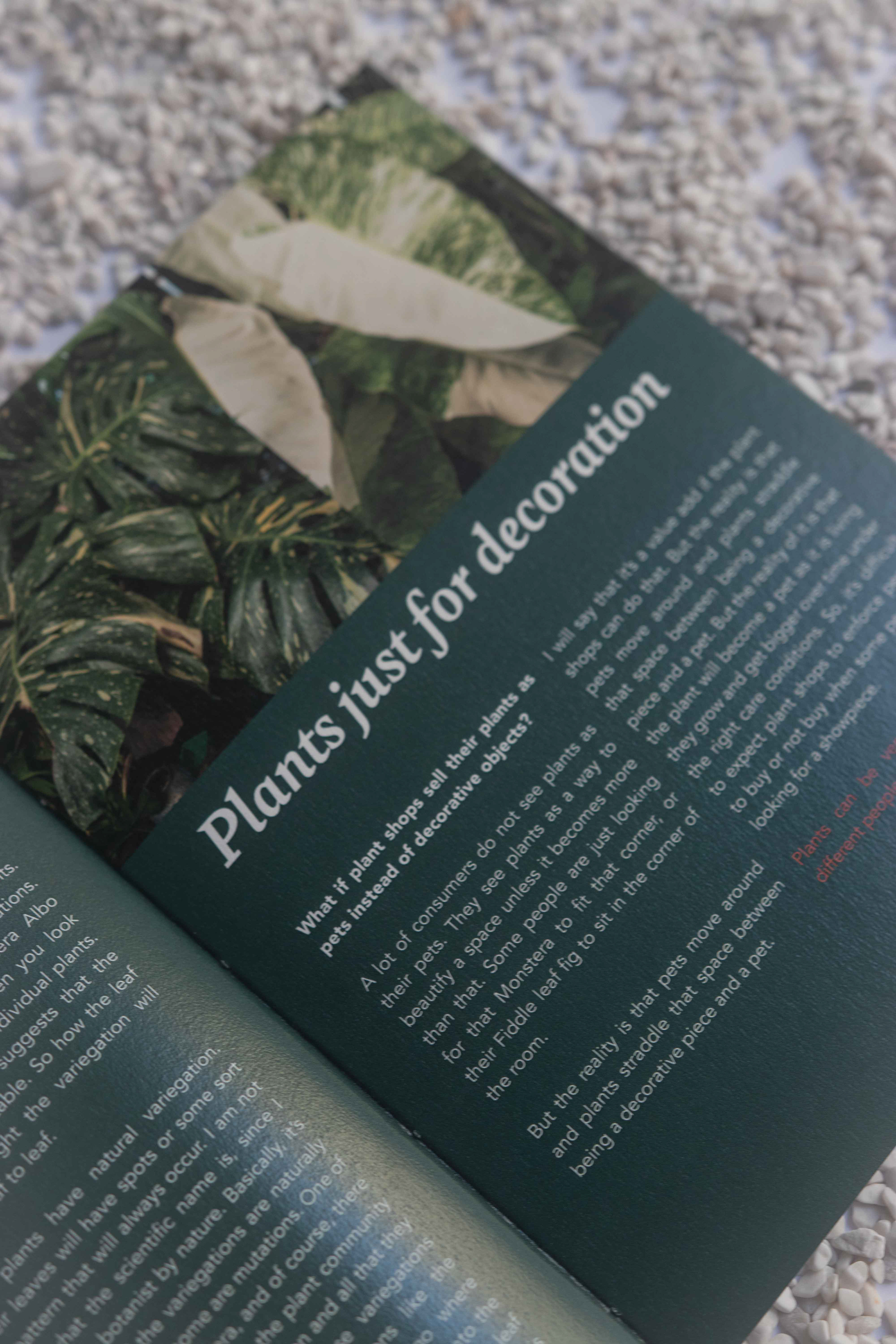

Artefact 3: Plant Hospital

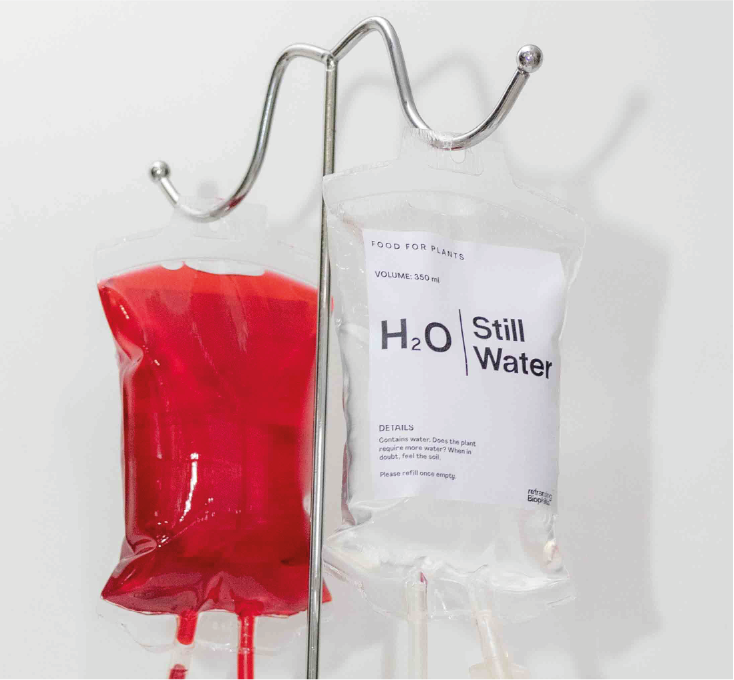

Plant hospital is a statement piece that is meant to provoke viewers to rethink how they view plants by personifying them.
Imitating an IV drip and a Blood Transfusion, Plant hospital shows a plant's basic need for survival: its sustenance. Blood contains the three major nutrients that are also found in fertilisers; Nitrogen, Phosphorous and Potassium. Plants require such nutrients for the same reasons why any complex organism need them: to fight off pest and diseases.
Future Steps
User testing and reiterating for the next step of the project as shown in Rethinking Biophilia.
Currently, the research has been greatly expanded on and the data I have gathered is sufficient to prove the evidence of increased consumption and the high possibility of overconsumption.
The next step focuses on answering the question of what is a feasible solution. I have found new contacts that are experts in the field of conservation and environmental preservation in Singapore, this can prove paramount to the application portion of the project.